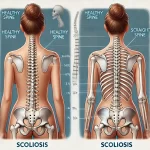
Ovarian cancer is a type of cancer that occurs in a woman’s reproductive system. It affects the ovaries, which are located at the lower end of the fallopian tube near each side of the uterus. When ovarian cells become abnormal and start to multiply uncontrollably, they develop into tumors that then grow within or on the surface of either one or both ovaries.
While this type of cancer can be quite serious, it is still considered very treatable with early intervention and diagnosis. There are several types of ovarian cancers with different causes and treatments depending on what kind it is.
Common symptoms include bloating, abdominal discomfort and pain, feeling full early after eating small portions, constipation and change in bathroom habits (urination), nausea or vomiting, fatigue/lack of energy, menstrual changes including abnormal bleeding from vagina or spotting between periods as well as unexplained weight loss/gain.
If any combination of these symptoms persist for more than 2-3 weeks your doctor should be consulted about them for further evaluation as soon as possible!
Ovarian cancer is a serious condition, and it’s important to catch it early. While there are no surefire signs of ovarian cancer, many women experience abdominal bloating or pain. Other common symptoms include pelvic discomfort or pressure, increased urination frequency (even at night), frequent urges to urinate, gastrointestinal issues like nausea and indigestion and feeling full quickly while eating.
Unexplained weight loss or gain can also occur in some cases. Additionally, the presence of blood in your stool or urine should be assessed by a physician right away. If you have any of these symptoms with no obvious cause—especially if they worsen over time—it’s important that you seek medical attention as soon as possible for further testing. Early detection is key when dealing with ovarian cancer, so don’t hesitate to reach out for help if something seems off!
While the exact cause of ovarian cancer is still unknown, certain factors may increase a woman’s risk of developing it. The most significant risk factor is age — more than half of all cases are found in women over the age of 63.
Women with a family history of breast or colon cancer have an increased chance as well. Other signs and symptoms associated with ovarian cancer include abnormal vaginal bleeding, lower abdominal pain and bloating, increased urination frequency, changes in appetite and fatigue. Treatment options for ovarian cancer depend on how far the disease has progressed at diagnosis.
Surgery to remove tumors from the ovary may be recommended followed by chemotherapy or radiation therapy if needed. Additionally, lifestyle changes such as eating a healthy diet and maintaining a regular exercise routine can help reduce your chances of developing this serious health condition.
The diagnosis of ovarian cancer begins with a clinical visit to the doctor, where a physical examination and pelvic exam will be done. The physician may order imaging tests such as an ultrasound or CT scan to get a better visualization of your ovaries. A blood test may also be ordered to check for elevated CA-125 levels, which is known as the “tumor marker” that helps detect cancers at an earlier stage.
Additionally, a biopsy may also be recommended in certain cases. During this procedure samples are taken from certain areas around the cervix and uterus that can indicate any suspicious lesions or abnormal cells that could lead to further testing if needed. After all available information has been collected, the physician will determine whether or not you have ovarian cancer and form treatment plans accordingly.
The cost of ovarian cancer treatment varies greatly depending on the stage of the disease, type and grade of tumor, whether it has spread to other parts of the body, the availability of health insurance coverage, and other factors. The average cost for treatment can range anywhere from tens of thousands to hundreds or even thousands of dollars.
Treatment typically includes chemotherapy drugs that are administered either orally or intravenously, as well as surgery such as a biopsy (removal) or hysterectomy (the removal of all or part of the uterus). Radiation may also be used in some cases.
Additionally, certain medications may need to be taken daily for maintenance therapy and there is often a considerable amount involved in these costs too. A person’s total out-of-pocket expense profile will depend on any available insurance coverage along with what their assisted living center covers in terms its service package regarding prescription medications.
Indian Health Adviser (IHA) is a healthcare facilitator seeking to make health and wellness easier for people of international residents, their families, and their friends.
Designed by Acmeinfolabs